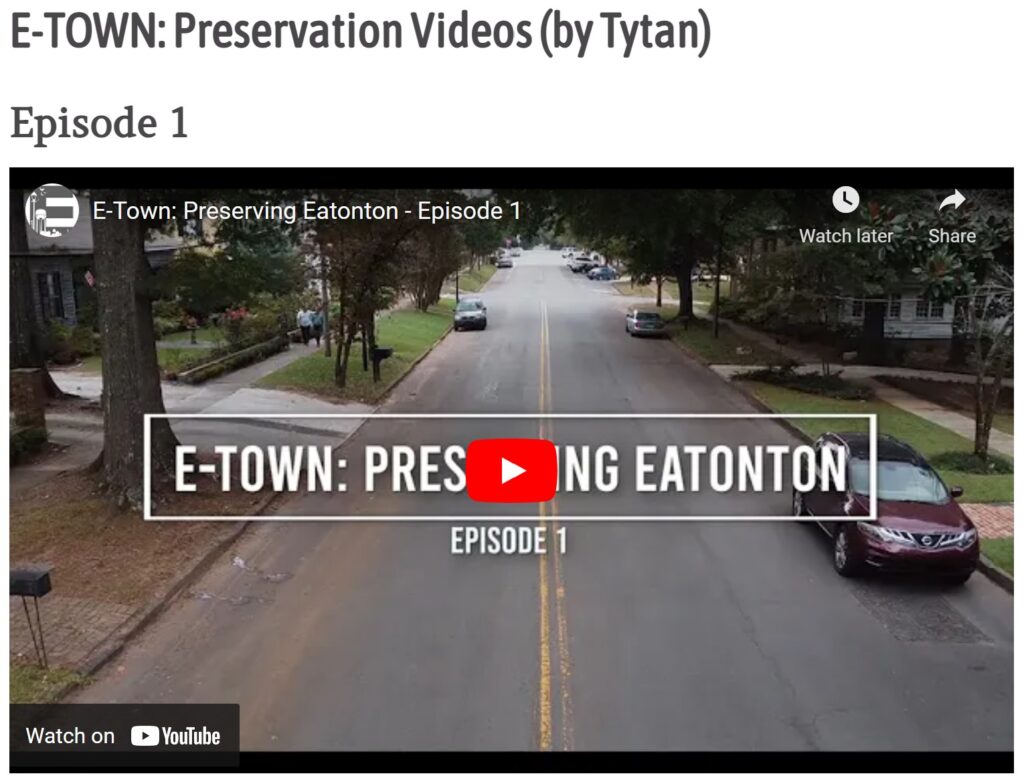This document, 2016 Eatonton Guidelines is a .pdf file that contains the current guidelines used by the Eatonton Historic Preservation Commission
This file is large and may take a while to download. You may obtain printed copies of the guidelines from a member of the commission, from City Hall or from Planning and Zoning.
PLEASE NOTE THAT THESE ARE GUIDELINES AND IN CERTAIN CIRCUMSTANCES THEY MAY NOT APPLY. It is critical that any exterior changes to a property in the local historic district be presented at a Design Review meeting so that a determination can be made as to the appropriateness of the proposed change.
Standards Overview:
For specific guidelines please review the PDF document.
- A property shall be used for its historic purpose or given a new use
that requires minimal change to its distinctive materials, features,
spaces, and spatial relationships. - The historic character of a property shall be retained and preserved.
The removal of distinctive materials or alteration of features, spaces,
and spatial relationships that characterize a property shall be avoided. - Each property shall be recognized as a physical record of its time,
place, and use. Changes that create a false sense of historical
development, such as adding conjectural features or elements from
other historic properties, shall not be undertaken. - Changes to a property that have acquired historic significance in their
own right shall be retained and preserved. - Distinctive materials, features, finishes, and construction techniques
or examples of craftsmanship that characterize a property shall be
preserved. - Deteriorated historic features shall be repaired rather than replaced.
Where the severity of deterioration requires replacement of a distinctive
feature, the new feature shall match the old in design, color, texture,
and where possible, materials. Replacement of missing features shall
be substantiated by documentary and physical evidence. - Chemical or physical treatments, if appropriate, shall be undertaken
using the gentlest means possible. Treatments that cause damage to
historic materials shall not be used. - Archeological resources shall be protected and preserved in place. If
such resources must be disturbed, mitigation measures shall be
undertaken. - New additions, exterior alterations, or related new construction shall
not destroy historic materials, features, and spatial relationships that
characterize the property. The new work shall be differentiated from
the old and shall be compatible with the historic materials, features,
size, scale and proportion, and massing to protect the integrity of the
property and its environment. - New additions and adjacent or related new construction shall be
undertaken in such a manner that, if removed in the future, the essential
form and integrity of the historic property and its environment would
be unimpaired.

